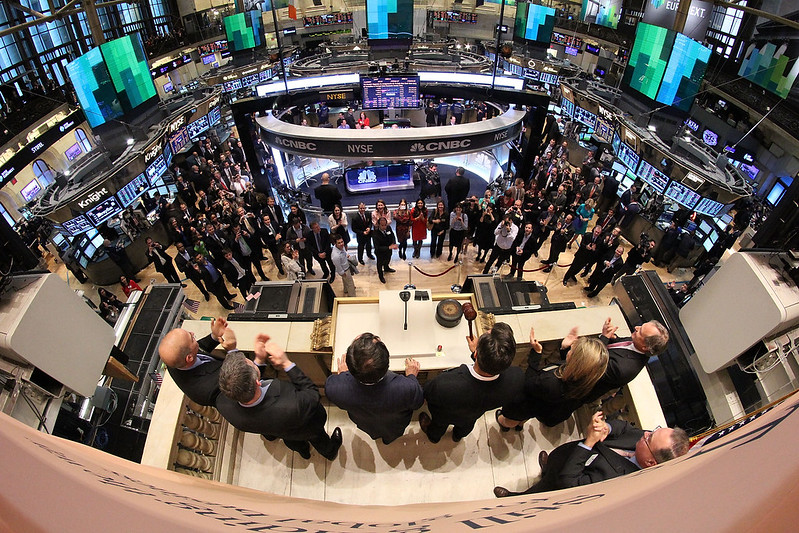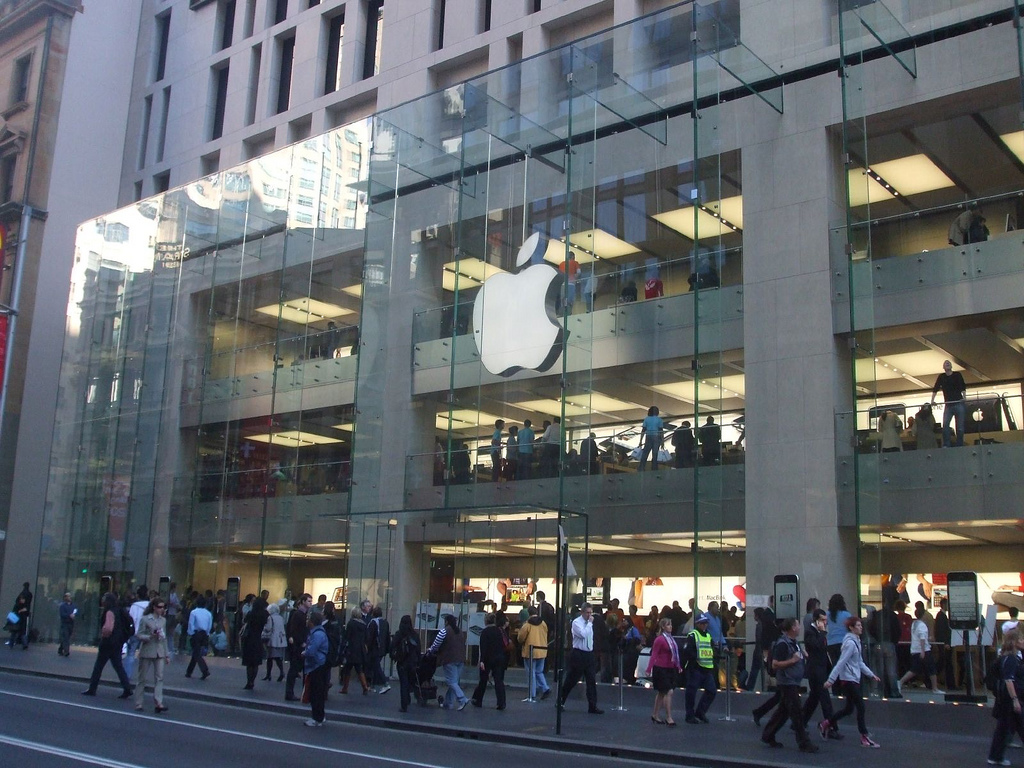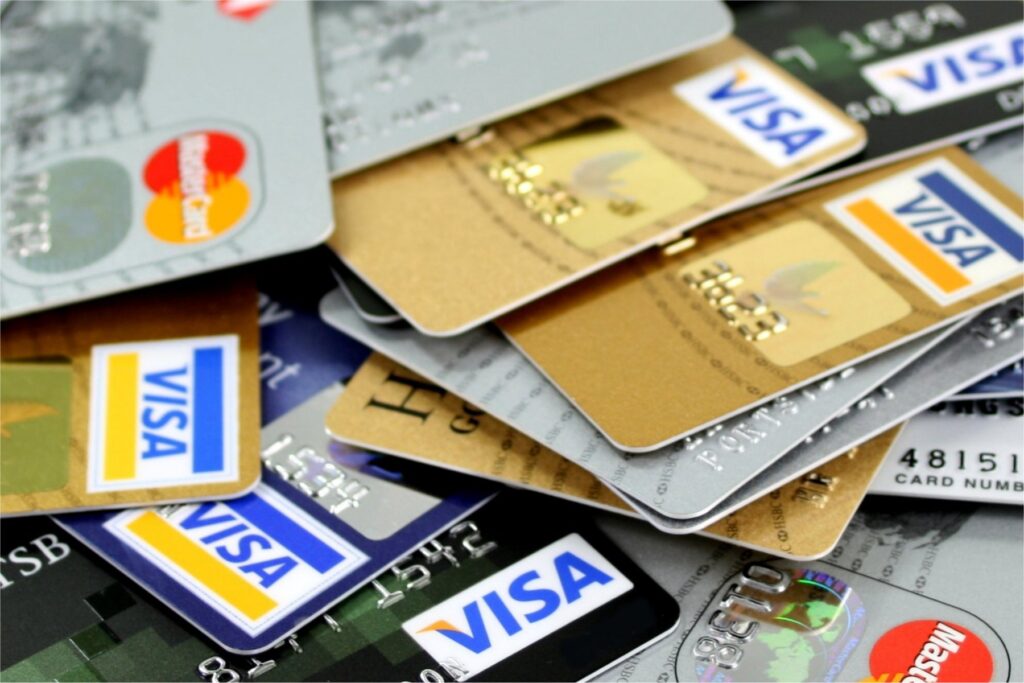Ever scroll through your feed and feel like everyone but you is sitting on a secret stock tip? Same. Well, grab your avocado toast and settle in, because the Oracle of Omaha just handed us his playbook—and it’s juicier than a freshly tapped kombucha. From tech titans to soda staples, Buffett’s got his money where his mouth is, and trust me, these aren’t dusty relics from a ’90s portfolio. We’re talking about the real “set-it-and-forget-it” moves that smash FOMO and embrace that sweet compound interest glow-up. Ready to level up your investment game? Let’s unpack the 14 things Buffett is whispering to his inner circle (and now, to us).
1. S&P 500 Index Funds

According to a recent Reuters report, Buffett said most investors are better off putting their money in low-cost index funds rather than trying to pick individual winners. He’s basically telling us peasants to save ourselves the headache of researching and just ride the market wave, thank you very much. He noted that a “very low-cost index is going to beat a majority of amateur-managed money or professionally-managed money” in a candid press conference. This is not your grandpa’s dusty stock tip; it’s a timeless hack from the Oracle of Omaha himself. The idea is to set it and forget it, letting compound interest do its magic while you sip your latte. Buffett’s mantra is essentially: “If you don’t know what you’re doing, don’t do it”—mic drop.
So what’s next? Imagine you automate $200 a month into a Vanguard S&P 500 fund and watch it grow while you binge-watch your favorite series guilt-free. It’s like social media scrolling, but for your wallet—mindlessly enjoyable with serious rewards. Plus, you sidestep the panic of expecting to find the next Tesla or Zoom in a dumpster fire of hot takes. If your inner control freak fears missing out on the “next big thing,” remember Buffett’s advice: be fearful when others are greedy and greedy when others are fearful. By sticking to low-cost index funds, you’re basically ghosting market noise and focusing on the long game. Trust me, your future self will high-five you for this one.
2. Apple

Apple is basically the golden child in Buffett’s portfolio, with a jaw-dropping $60.27 billion stake riding on its iPhones and services empire, per Investopedia. If you think Apple’s just about shiny gadgets, think again—it’s a cash cow that prints money every time someone says “Hey Siri.” Buffett loves the sticky ecosystem and recurring revenue from subscriptions, which is like a never-ending subscription for your financial dreams. Even when tech sectors swoon, Apple’s brand loyalty and cash hoard keep it cruising. He’s always preaching patience, and Apple’s track record of innovation makes it a prime candidate for a musical chairs game where Buffett never leaves. Plus, dividends are basically the cherry on top of this tech sundae.
When Buffett doubles down on Apple, he’s sending a clear signal: tech giants with real moats are the real MVPs of wealth building. If you have a little extra cash clowning around in your bank account, sprinkling some into Apple shares might just be your smartest clapback to inflation. You’re not just buying stock; you’re investing in the hype machine that’s still selling out every product launch like Coachella tickets. Sure, it’s not the cheap thrill of meme stocks, but steady growth beats rollercoaster rides for your sanity and portfolio. So, channel your inner Buffett and embrace the fruit (pun intended) of American ingenuity. It’s like having a VIP pass to the future—just with stock certificates.
3. American Express

In a recent deep dive by Motley Fool journalist Daniel Foelber, we learned that American Express reaffirmed its fiscal 2025 forecast and is expected to crank out EPS of up to $15.50, a solid bump from last year. Buffett’s love affair with AmEx isn’t new—it’s Berkshire’s second-largest holding and has been a reliable cash register since the ’90s. The premium rewards and customer loyalty mean people keep swiping those cards even when the market acts sus. Buffett loves their fee-based model, which feels like printing money on every transaction. Plus, it’s got a rock-solid balance sheet that would probably survive a zombie apocalypse. If you want to invest like the Oracle, you have to pick companies with recurring revenue and moatlike defenses—American Express ticks both boxes.
Imagine being a fly on the wall when Buffett first glanced at AmEx’s numbers and thought, “Yeah, I’ll take some of that.” Today, we mere mortals can hop on board, snapping up shares or even treating ourselves to the occasional AmEx Platinum card—think of it as a portfolio trophy. If you crave prestige without the yacht-budget, AmEx is your financial glow-up. Just remember to mind your minimums; this isn’t penny stock territory. You don’t need a private jet to get in, but a little dough does help. And when you collect those dividends, feel free to do a victory dance—Buffett would approve.
4. Coca-Cola

As detailed in Barron’s recently, Coca-Cola’s stock has fizzed up nearly 18% in 2025, making it the Dow’s top performer. Buffett’s four-decade crush on Coke isn’t just sentimental—it’s strategic, cashing in on global brand obsession and a dividend streak older than most of us. He owns over 9% of the company, which is like having your own mini soda empire. When competitors panic about sugar taxes or soda-phobia, Coke keeps innovating with health-centric options and protein shakes. Those Avengers-level product launches keep consumers thirsty for more, and that’s music to Buffett’s ears. He’s happiest when he can count on consistent cash flows, and Coca-Cola’s dividend track record is basically holy scripture for income hunters.
Investing alongside Buffett in Coke feels like chugging nostalgia from a glass bottle—you get all the childhood feels with adult-level financial gains. If you’re craving a defensive play, this beverage behemoth fizzes through market dips better than most. Plus, the world’s thirst for fizzy refreshment doesn’t exactly evaporate when the Fed hikes rates. Just think of each can as a mini dividend machine, spitting out cash for decades. When you add that to price appreciation, you’ve got a portfolio pop that rivals any craft soda. Grab your coaster and join the refreshment revolution.
5. Chevron

According to a recent Yahoo Finance analysis, Buffett ramped up his bet on Chevron amid oil market dips, eyeing juicy dividends and stable cash flows. He currently holds a multi-billion-dollar chunk of Chevron, which fuels the economy whether you’re road-tripping or heating your home. Buffett loves that oil and gas giants like Chevron can print serious free cash even when the market’s on a roller coaster. Its dividend yield sits around 4%, which is like finding a coupon for your retirement plan. Plus, energy demand isn’t exactly going extinct anytime soon, so you’re tagging along on a long-term gravy train. It’s classic Buffett—pick cyclical sectors with moats so wide even a bowl of chili can’t bridge them.
Dipping your toes into Chevron stock might not sound as flashy as crypto, but it’s about as exciting as reliable side income gets. Imagine collecting quarterly dividends that cushion your portfolio against market drama. Sure, oil has its haters for environmental reasons, but billions still need it to fuel their SUVs and generators. If you care about cold, hard cash, Chevron’s dividend sneaks up on you with a steady tap (pun intended). Buff it up in your brokerage account and let the barrels do the heavy lifting.
6. Berkshire’s Cash War Chest

Buffett sitting on a mountain of cash—over $320 billion at last count—is like a kid hoarding Halloween candy, except it’s big green bills and way more strategic. He’s been building this liquidity to pounce on bargains when they show up, like a panther stalking in the dark. Market sell-offs? Bring it on. Buffett has literally said, “Cash is like oxygen: you only appreciate it when you’re gasping for it.” With that firepower, he can scoop up whole companies or swoop in during downturns without making his mom (aka his board) nervous. When others hit the panic button, he’s calmly dialing up opportunity.
For us mere mortals, it’s a reminder to keep a cash cushion—so you’re not forced to sell your key winners when panic hits. Think of it as your personal ammo stockpile for market meltdowns. Automate an emergency stash that’ll keep you chill when bitcoin dips or riots erupt. When opportunity knocks, you’ll have the doorbell ready. Don’t let FOMO into your emergency fund—it’s your safety net, not a trading chip.
7. BNSF Railway

You might think railroads belong in a history museum, but Buffett sees BNSF Railway as the freight elevator keeping America’s economy upright. Owning BNSF is like having front-row tickets to all the goods moving coast to coast—from grain to gadgets. Even Amazon can’t deliver your package on these iron dinosaurs, so the demand stays steady. The company hauls everything from coal to cars, meaning its revenue streams are practically pandemic-proof. Since he snagged it in 2009, BNSF has given Berkshire a reliable income belt that doesn’t unravel when the market hits a pothole. Buffett’s mantra of “buy and hold forever” fits railroads like a glove—once you’re on the tracks, you don’t need to worry about being rerouted.
You can invest in BNSF indirectly by owning Berkshire Hathaway Class A or B shares, effectively hitching a ride on the big-budget railroad saga. If you prefer direct exposure, consider transportation-focused ETFs that include railroad giants. The payoff might not be breakneck velocity, but it’s more like the elevator at the mall—predictable and consistent. Think of dividends trickling into your account while you chill with a coffee on the porch. In a world obsessed with instant gratification, BNSF’s slow and steady march is oddly satisfying. And remember, when the world needs stuff moved, these rail lines are the unsung heroes.
8. Geico and Other Insurance Wonders

Buffett didn’t get rich by flipping houses; he got rich by selling insurance, and that’s why owning companies like Geico makes total sense. Insurance businesses collect premiums upfront, invest the float, and pay claims later—straight out of Buffett’s “look, don’t touch” playbook. When you think about it, Geico is basically Forrest Gump with a budget car—simple but endlessly reliable. Every policyholder’s monthly payment goes into a pool that works for you as soon as it’s in, all thanks to that float magic. Plus, the combined ratio is so tight that Geico often comes out healthy even in bad years. Buffett famously said insurance floats can be more profitable than rocket science, and Geico’s track record proves it.
You can’t own Geico directly, but you can scoop up Berkshire Hathaway shares to ride that insurance gravy train. If you’re aiming for industry-wide exposure, insurance-focused funds pack several carriers, spreading risk like a financial airbag. What’s cooler than getting free use of other people’s premiums? Watching that float grow while you sleep like a baby. And if a big disaster hits, you’re covered—but premiums rise, which is oil on Buffett’s value engine. It’s paradoxically dependable chaos that funds Buffett’s other big bets. Insurance might sound boring, but in Buffett-world, boring is the new black.
9. Utilities and Energy Infrastructure

Another thing Buffett loves is the stable cash flow of utilities and energy infrastructure—think pipelines, power grids, and storage terminals. These businesses often come with government-like monopolies, so they’re chill about racking up reliable income. Anyone lighting their home, charging their EV, or needing gas to grill is paying utility bills every month like clockwork. Buffett’s philosophy of owning tangible assets with predictable cash flows shines through when he picks these companies. When demand dips in summer or spikes in winter, price adjustments and regulated returns keep the profit train rolling. He’s said that boring capacity and distribution networks beat hype any day.
For us, ETFs focused on utilities or Master Limited Partnerships (MLPs) are an easy entry point. You get a slice of solar farms, wind turbines, pipelines, and electric lines—basically the backbone of modern life. Dividends often land in your account as reliably as your morning text from your BFF. And unlike stocks that crash with a hashtag, utilities tend to dip in whispers. It’s the tortoise approach to investing: slow, steady, and surprisingly durable. Let your portfolio hum along quietly, and you’ll thank yourself when volatility ghosts your friends.
10. Real Estate via REITs

Direct property can be a landlord’s nightmare, but Real Estate Investment Trusts (REITs) let you own apartments, offices, and warehouses without mowing lawns or chasing renters. Buffett once admitted he admires real estate’s fundamentals but prefers businesses over bricks, so REITs are our DIY compromise. REITs pass most of their rental income directly to shareholders, which is like getting a rent check without landlord headaches. They often come with juicy yields and diversify your portfolio beyond stocks and bonds. Plus, since REITs trade on exchanges, you can buy or sell shares faster than you can evict a tenant.
Modern REITs span data centers to healthcare facilities, so you can pick sectors that vibe with your portfolio goals. Imagine wallet gains from apartment rents while you’re on vacation—your money never sleeps. Just be mindful of interest rates, as REIT prices can wobble when yields surge. But if you lock in buying during rate spikes, you might score discounted entry before the next income rally. It’s all about timing and picking trustworthy managers, kind of like selecting the right Airbnb host. Let that passive rent roll deposit itself, and enjoy your landlord karma.
11. Healthcare Giants

Big pharma and healthcare devices are areas where Buffett picks winners, thinking people will need prescriptions and pacemakers regardless of YOLO trading. Companies that crank out insulin, stents, and surgical robots have stickier earnings than your favorite sticky notes. Buffett digs firms with patent-powered monopolies that can hike prices and keep cash flow humming. Even when markets tighten, the healthcare sector often posts positive vibes because health is non-negotiable. He’s been known to respect Johnson & Johnson’s baby powder legacies, even if the headlines get messy. When the world needs life-saving tech, these giants answer the call.
You can tap into this sector through healthcare ETFs or by buying major drugmakers and device companies—just buckle up for regulatory news. Diversification is key; mix in biotech to chase growth and big pharm for stability. When an earnings miss hits, you’ll likely shrug because people still need EpiPens while that bird app flops. It’s like insuring against market malaise with medical-grade premiums. Let these healthcare giants nurse your portfolio back to health year after year.
12. Consumer Staples

Stuff like toothpaste, soap, and toilet paper barely makes headlines, but these brands bring cozy stability—people still brush teeth and buy Charmin even when Reddit collapses. Buffett digs staples because consumers can’t ghost their morning routine, no matter how cringe the economy gets. Giants like Procter & Gamble and Colgate-Palmolive come with decades of consumer trust, pricing power, and dividends that whisper “reliability.” They’re the financial version of a morning cup of joe: basic but necessary. When inflation spikes, these staples often pass costs to customers, keeping margins healthier than a yoga retreat.
To invest, consider a staples-focused ETF or pick individual champions with strong brands and global reach. These companies may not spark envy at cocktail parties, but your portfolio will be sipping piña coladas while others panic-buy GameStop. When headlines get spicy, staples stay cozy. And hey, your sense of smell will thank you—scholarly scent aside, there’s comfort in predictability. Let these everyday essentials flush stability into your wallet.
13. Visa and Mastercard

Payment processors Visa and Mastercard are in Buffett’s orbit, quietly collecting tolls on global commerce. Whenever someone swipes or taps, these companies snag a tiny fee that snowballs into mountain-sized profits. They have low capital requirements and massive network effects—more cards mean more merchants, which means more transactions. Buffett loves durable competitive advantages, and in payments, these two run the show like royalty and auctioneer all at once. Even if a fintech unicorn pops up, it rarely unseats these behemoths. Their balance sheets flex with scale, making them the literal backbone of digital spending.
You can own these through ETFs or direct stock buys if you want that digital-age gravy train. Their margins are so chunky, they could compete in Olympic weightlifting. Even if e-wallet fads flare up, Visa and Mastercard evolve rather than dissolve. Let your money travel at electronic speeds and collect entry fees globally—no passport needed. In a world of fintech startups, these legacy players still feel futuristic.
14. Domino’s Pizza and Constellation Brands

Buffett dipped his toes into Domino’s Pizza and Constellation Brands when they were on sale—classic “buy wonderful companies” approach. Pizza delivery and beer might sound random, but people will always want snacks and brews for movie nights. Domino’s has a digital ordering machine that’s basically revenue candy, and Constellation’s portfolio of wines and spirits covers celebrations from tailgate to TGIF. Both companies cash in on consumer habits that don’t ghost you after a tweet. They’ve shown resilience in downturns and growth in booms—talk about a power couple.
Buying shares of pizza or booze makers isn’t just for the party crew—it’s a play on predictable consumption. Snap up these names or relevant ETFs to ride the snack-n-spirit wave through recessions and bull runs alike. When other sectors flounder, these companies keep the register ringing. It’s like buying gold, but tastier. If you ever need to justify your HODL to friends, just say Buffett said so—and watch their jaws drop.
This article is for informational purposes only and should not be construed as financial advice. Consult a financial professional before making investment or other financial decisions. The author and publisher make no warranties of any kind.









